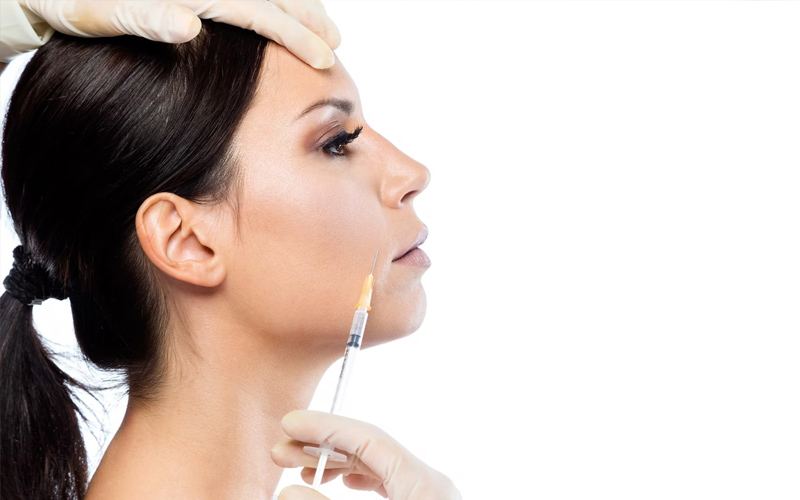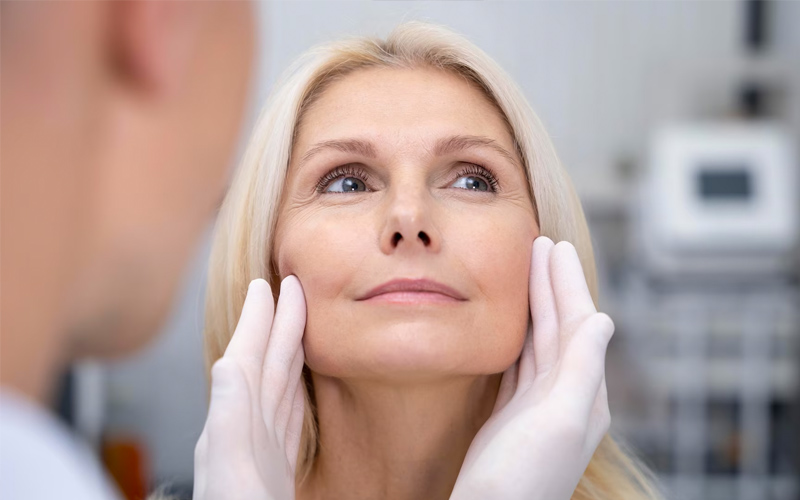Fat Injection in the Face
Fat injections, especially in the eye and face areas, have gained significant popularity in recent years. Initially used to restore volume loss, similar to traditional dermal fillers, fat injections are now recognized for their regenerative effects, particularly due to the presence of stem cells in fat tissue. This discovery has expanded the use of fat injections not only for volume restoration but also for skin rejuvenation and tissue regeneration in the face and around the eyes. Consequently, fat injection techniques have evolved to meet the specific needs of different facial areas and treatment goals.
In our clinic, autologous fat (the patient’s own fat) is frequently used for various purposes in both the eye area and the face. These injections can be applied in several different ways:
Traditional Fat Injections
In traditional fat transfer, fat is harvested from areas such as the abdomen or thighs and then injected into specific regions of the face to restore lost volume. Over time, studies have shown that different techniques are more suitable for different facial areas. Since the eye area is one of the most delicate and sensitive parts of the face, microfat and nanofat injection techniques are often used for this region.
Compared to traditional fat transfer methods, microfat injection involves transferring smaller fat lobules. Fat is typically harvested from the abdominal area or the upper/outer thighs and mechanically refined into smaller particles before being injected. This technique is particularly useful for the eye area, where the skin is thin and subcutaneous fat is sparse compared to other regions of the body.
Using smaller, more fluid fat particles in the form of microfat leads to better results around the eyes, where thicker fat injections could cause lumps or unevenness under the skin, which are difficult to correct. Microfat injections provide smoother and more natural-looking results, making them preferable for the delicate tissues around the eyes.
Benefits of Fat Injections
- Natural Volume Restoration: Since the fat is derived from the patient’s own body, it integrates well with existing tissues, creating a natural-looking outcome.
- Long-Lasting Results: Fat injections provide more permanent solutions than synthetic fillers, with a portion of the transferred fat cells remaining viable long-term.
- Regenerative Effects: Stem cells present in fat tissue contribute to skin rejuvenation and regeneration, making the skin appear fresher and more youthful over time.
Conclusion
When performed by a skilled professional, fat injections using advanced techniques like microfat can provide effective, natural, and long-lasting solutions for both volume restoration and facial rejuvenation, particularly around the sensitive eye area. This approach minimizes risks and enhances overall results by carefully considering the unique properties of the tissues in the treatment area.
In recent years, the discovery of stem cells within fat tissue has led to the development of nanofat injections, a promising new method in facial rejuvenation. Unlike traditional fat injections, which primarily focus on restoring volume, nanofat injections target skin regeneration and the improvement of fine wrinkles and scars by harnessing the regenerative properties of stem cells.
In this procedure, the fat is processed more finely than in microfat injections, breaking down the fat cells to release the stem cells. These stem cells are then injected into the skin (intradermally) to promote tissue regeneration, improve skin texture, reduce fine wrinkles, and enhance wound healing. Medical studies have demonstrated the benefits of stem cells in skin renewal, making nanofat an effective tool in anti-aging treatments.
Nanofat injections are particularly effective in sensitive areas, such as around the eyes, where the skin is thin and prone to early signs of aging. This technique can also be combined with other aesthetic procedures, like blepharoplasty (eyelid surgery), to enhance overall results. The nanofat is injected into the deeper layers of the skin to stimulate collagen production and improve skin quality over time.
Key Benefits of Nanofat Injections:
- Stem Cell Regeneration: The stem cells present in the fat tissue contribute to the rejuvenation of aging skin, improving skin texture and reducing fine lines.
- Long-Term Results: Unlike traditional fillers, which only provide temporary results, the regenerative effects of nanofat can lead to lasting improvements in skin quality.
- Combination with Other Procedures: Nanofat injections can be used alongside other facial rejuvenation treatments to enhance overall results, particularly in delicate areas like the eyes.
Conclusion:
Nanofat injections, especially when combined with microfat techniques, are an innovative approach to facial rejuvenation that not only addresses volume loss but also promotes skin regeneration and renewal. In our clinic, this approach is frequently used to achieve youthful, long-lasting results, particularly in sensitive areas like the eyes and face. When performed by skilled professionals using the correct techniques, nanofat injections offer excellent outcomes, particularly in the early signs of aging.





